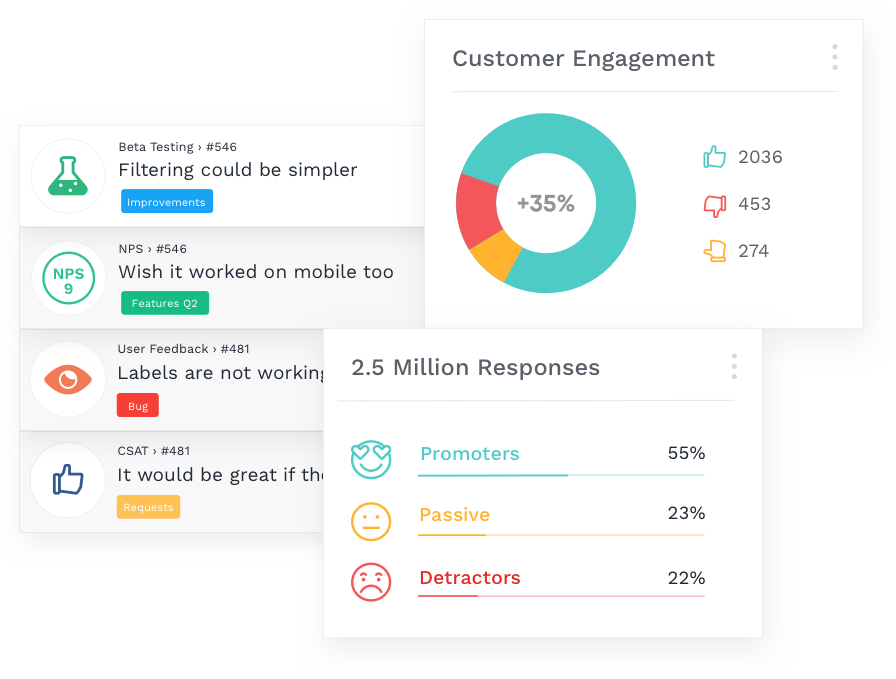Yo, diving deep into Understanding Customer Feedback Metrics, this intro sets the stage for an epic journey through the world of customer insights. Get ready to uncover the secrets behind customer feedback metrics and how they can revolutionize decision-making in businesses.
From the importance of these metrics to the various types and methods of collection, this guide will equip you with the knowledge needed to level up your product or service game. So, buckle up and let’s explore the realm of customer feedback metrics!
Importance of Customer Feedback Metrics

Understanding customer feedback metrics is crucial for businesses as it provides valuable insights into customer satisfaction, preferences, and areas for improvement. By analyzing these metrics, companies can make informed decisions to enhance their products or services and ultimately drive business growth.
Impact on Decision-Making Processes
Customer feedback metrics can have a significant impact on decision-making processes within a business. For example, if a company receives feedback indicating that customers are dissatisfied with a particular feature of a product, they can use this information to prioritize improvements or updates. This data-driven approach helps businesses allocate resources effectively and focus on areas that will have the most impact on customer satisfaction.
- Identifying trends and patterns in customer feedback can help businesses anticipate future needs and preferences, allowing them to stay ahead of the competition.
- Tracking metrics such as Net Promoter Score (NPS) can provide insights into customer loyalty and likelihood to recommend the company to others, guiding marketing strategies and customer retention efforts.
- Utilizing feedback metrics to measure customer satisfaction levels can help businesses identify areas of strength and weakness, enabling them to make targeted improvements and enhance overall customer experience.
Types of Customer Feedback Metrics
When it comes to customer feedback metrics, businesses use various types to gather insights and improve their products or services. Let’s dive into the different types commonly used in the industry.
Quantitative Customer Feedback Metrics
- Net Promoter Score (NPS): Measures customer loyalty based on the likelihood of customers to recommend the company to others.
- Customer Satisfaction Score (CSAT): Measures customer satisfaction with a specific interaction or experience.
- Customer Effort Score (CES): Measures the ease of customers’ interactions with a company.
Qualitative Customer Feedback Metrics
- Open-Ended Surveys: Allows customers to provide detailed feedback in their own words.
- Focus Groups: Small groups of customers discuss their experiences and provide insights.
- Customer Interviews: One-on-one conversations with customers to gather in-depth feedback.
Leveraging Different Types of Customer Feedback Metrics, Understanding Customer Feedback Metrics
Using a combination of quantitative and qualitative customer feedback metrics can provide a comprehensive view of customer sentiment and preferences. Quantitative metrics offer numerical data for easy tracking and benchmarking, while qualitative metrics provide rich, detailed insights into customer experiences. By analyzing both types of metrics, businesses can uncover trends, identify pain points, and make data-driven decisions to enhance customer satisfaction and loyalty.
Collecting Customer Feedback Metrics
When it comes to collecting customer feedback metrics, there are various methods you can use to gather valuable insights from your customers. It is crucial to collect feedback through multiple channels to get a comprehensive view of your customers’ opinions and experiences. Here are some tips on how to effectively gather and organize customer feedback metrics:
Surveys
- Send out surveys via email or through your website to gather structured feedback from customers.
- Use a mix of open-ended and multiple-choice questions to capture both quantitative and qualitative data.
- Offer incentives to encourage customers to participate in surveys and provide honest feedback.
Reviews
- Monitor online review platforms like Yelp, Google Reviews, and social media to see what customers are saying about your products or services.
- Respond to both positive and negative reviews to show customers that you value their feedback.
- Analyze trends in reviews to identify areas for improvement and track customer satisfaction over time.
Social Media
- Engage with customers on social media platforms like Twitter, Facebook, and Instagram to understand their sentiments and opinions.
- Monitor mentions and tags related to your brand to gather feedback in real-time and address any issues promptly.
- Create polls or surveys on social media to gather quick feedback from your followers.
Organizing Feedback
- Use a customer feedback management tool to centralize all feedback data and track trends over time.
- Categorize feedback based on themes or topics to easily identify common issues or suggestions from customers.
- Create reports or dashboards to visualize feedback metrics and share insights with relevant teams within your organization.
Analyzing and Interpreting Customer Feedback Metrics: Understanding Customer Feedback Metrics

When it comes to analyzing and interpreting customer feedback metrics, it is crucial to follow specific steps to extract valuable insights that can guide decision-making and drive business growth.
Steps for Analyzing Customer Feedback Metrics
- Organize data systematically to identify patterns and trends.
- Segment feedback based on key criteria such as demographics, purchase history, or behavior.
- Utilize data visualization tools to understand the data more effectively.
- Compare feedback metrics over time to track changes and improvements.
Significance of Interpreting Feedback Data Accurately
Interpreting feedback data accurately is essential for making informed decisions that can positively impact customer satisfaction and loyalty. Misinterpreting data can lead to misguided strategies and missed opportunities for improvement.
Best Practices for Deriving Actionable Conclusions
- Look for recurring themes or issues in customer feedback to prioritize areas for improvement.
- Combine quantitative metrics with qualitative feedback for a comprehensive understanding of customer sentiment.
- Engage with frontline employees to gain insights from direct customer interactions.
- Implement a feedback loop to continuously assess and address customer feedback.